Maxtronic Co AIBY Disk Array User Manual Aiby1400 Ch2
Maxtronic International Co Ltd Disk Array Aiby1400 Ch2
Contents
users manual 3
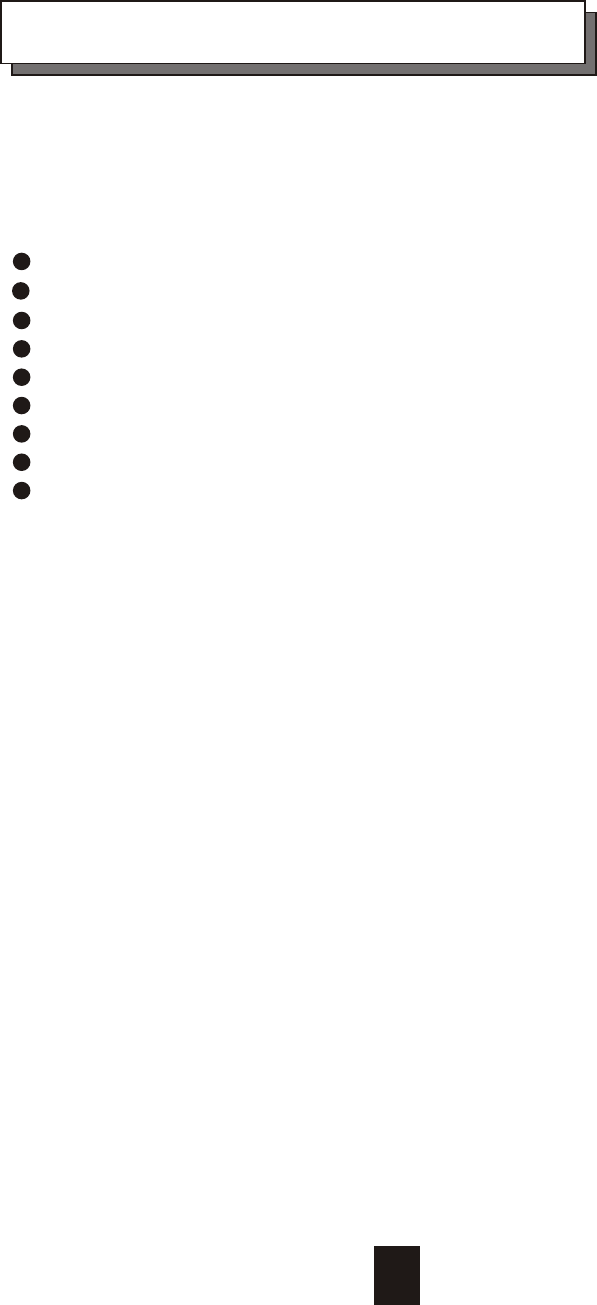
Chapter 2 : " Getting Started "
General Overview
This chapter helps you get ready to use the Disk Array. It gives you :
Unpacking & Checklist
Choosing a place for Disk Array
Identifying Parts of Disk Array
Power Source
Installing the Hard Disk Drives
Host Linkage
Power-On and Self-test
LED Display and Function Keys
LCD Status Display
The following illustrations will help you read the further sections.
2-1
Special Note :
RAID should never be considered a replacement for doing
regular backup. It's highly recommended to conduct a
backup strategy for critical data.
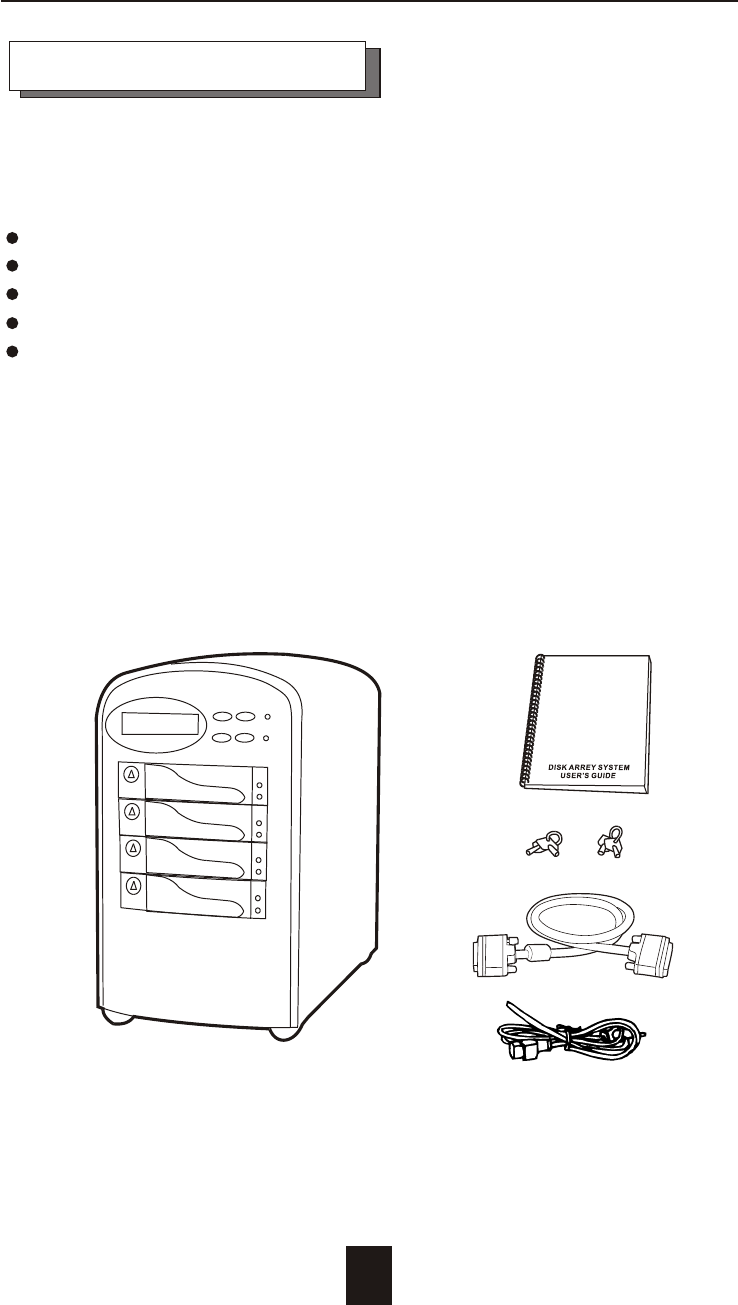
Unpacking & Checklist
Before unpacking your Disk Array , prepare a clean and stable
place to put the contents of your Disk Array's shipping container on.
Altogether, you should find the following items in the package :
The Disk Array
One AC power cord
One External SCSI cable
Keys ( For HDD Trays )
User Guide
Remove all the items from the carton. If anything is missing or
broken , please inform your dealer immediately.
Save the cartons and packing materials that came with the Disk
Array. Use these materials for shipping or transporting the Disk Array.
2-2
Getting Started
Figure : Checklist
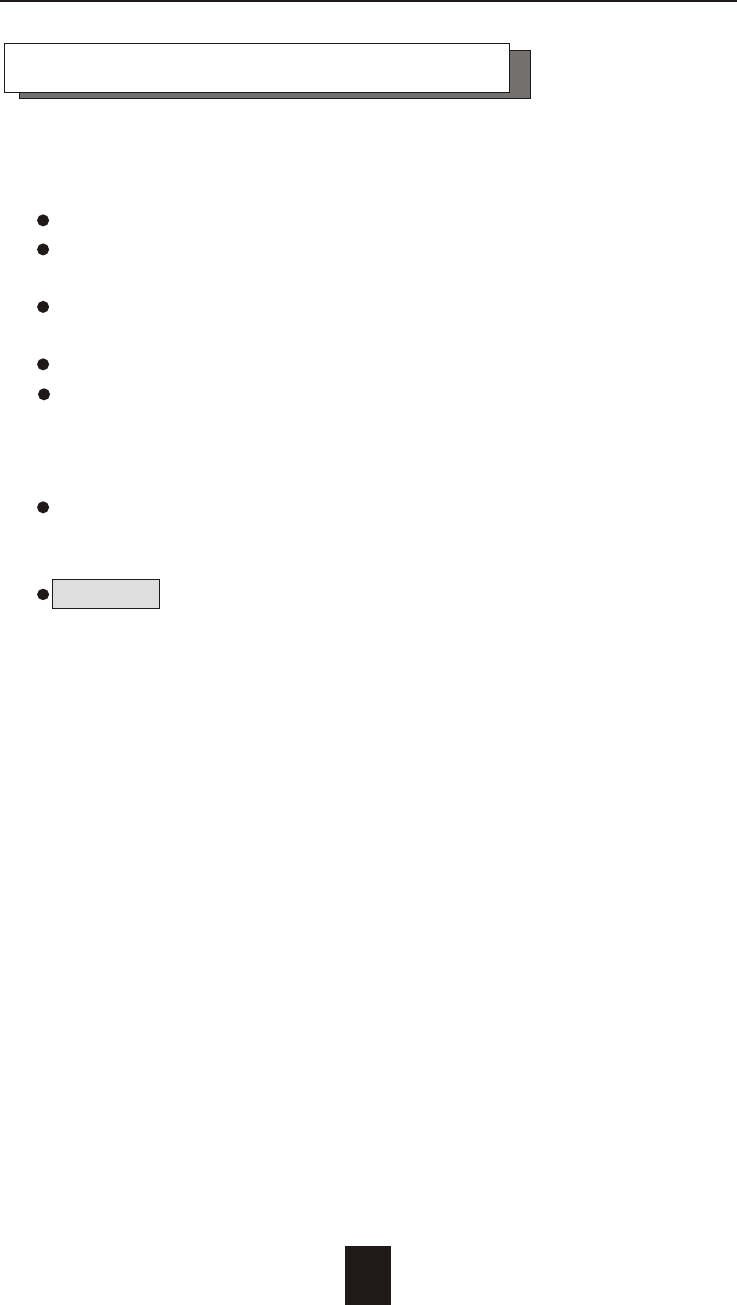
Choosing a place for Disk Array
When selecting a place to set up your Disk Array, be sure to follow
the guidelines as below:
Place on a flat and stable surface.
Use a stand that supports at least 50 kgs for this Disk Array.
(HDD included )
Place the Disk Array close enough to the computer for the Disk
Array's External SCSI cable to reach it.
Use a grounded wall outlet.
Avoid an electrical outlet controlled by wall switches or
automatic timers. Accidental disruption of the power source
may wipe out data in the memory of your computer or Disk
Array.
Keep the entire system away from potential sources of
electromagnetic interference, such as loudspeakers , cordless
telephones, etc.
Caution !
Avoid direct sunlight, excessive heat, moisture, or dust.
2-3
Getting Started
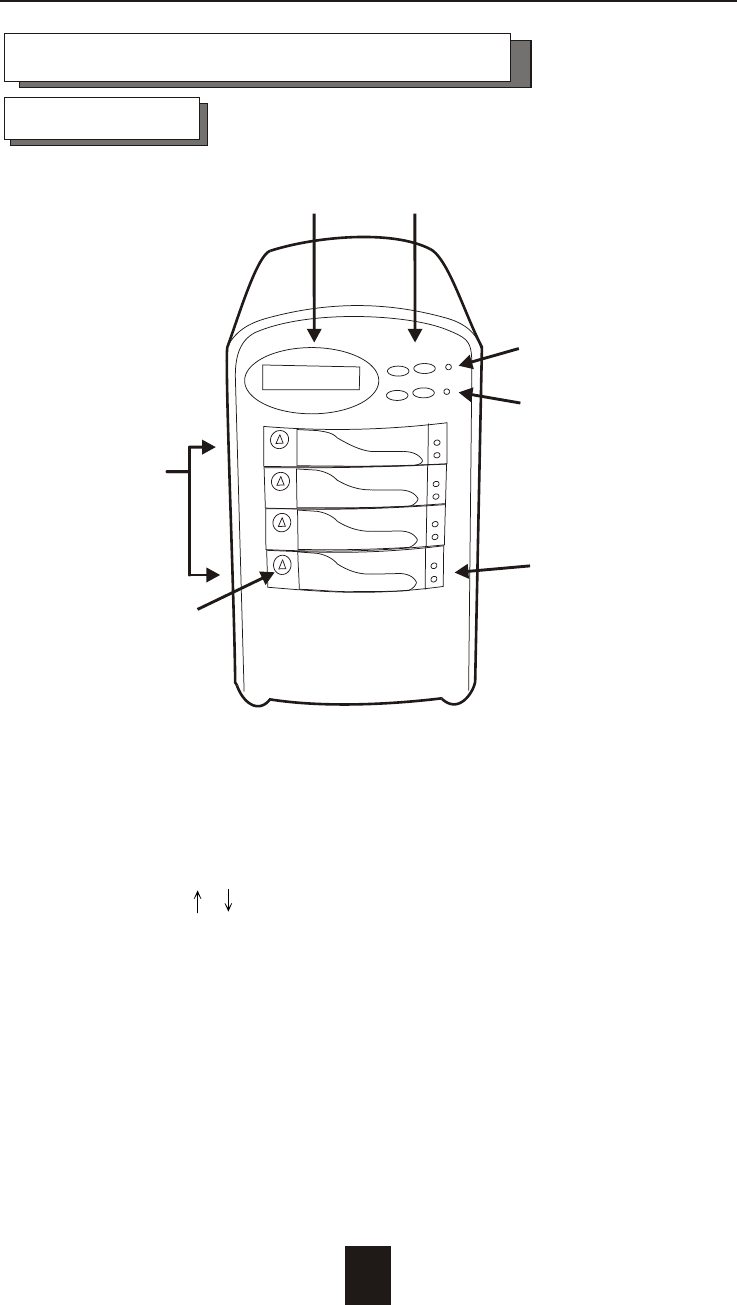
Figure : Front View
1. LCD Status Display Panel
2. HDD Trays 1 ~ 4
3. Function Keys ( , , Enter , ESC )
4. Power-On Indicator
5. Host Computer Access Indicator
6. HDD Tray Lock ( Lock / Unlock )
7. HDD Status Indicator
( Error (Red), Access (Yellow), Power-On (Green) )
2-4
Getting Started
Front View
Identifying Parts of the Disk Array
1
2
6
3
4
5
7
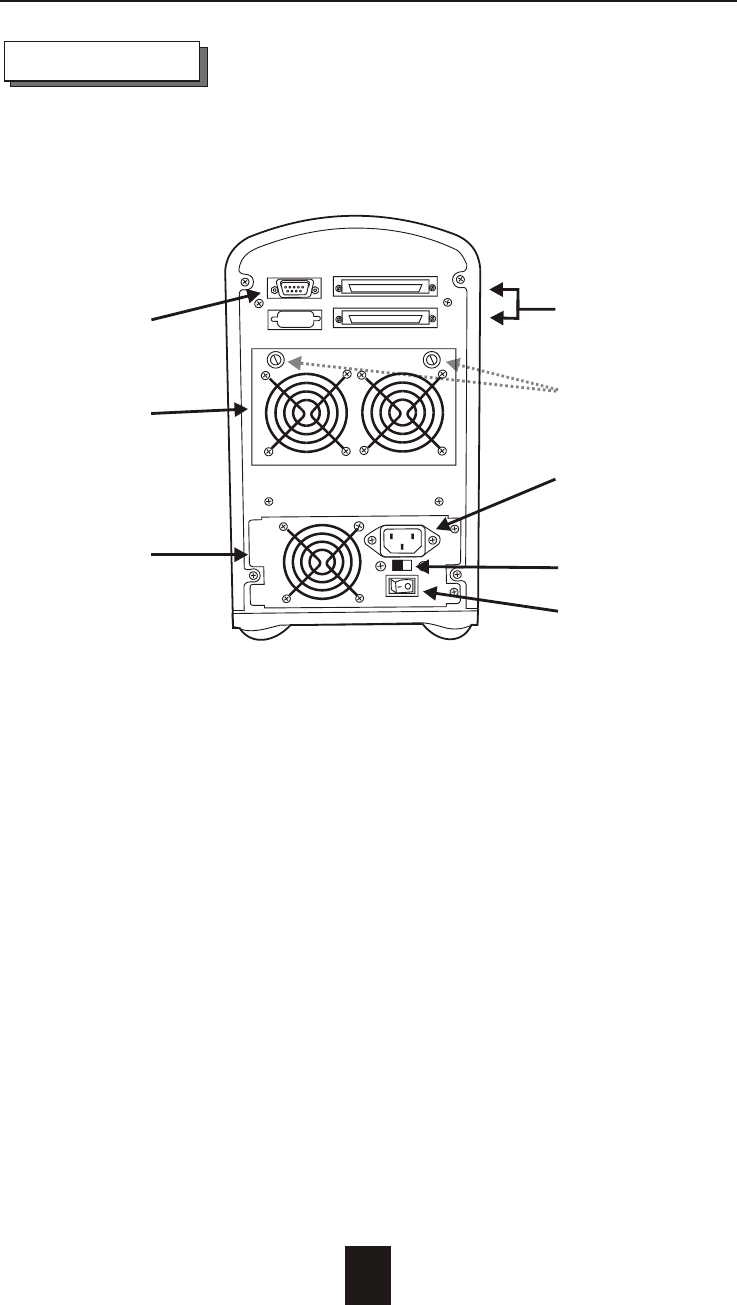
2-5
Getting Started
Figure : Rear View
1. RS232 Adapter ( Terminal Port )
2. Cooling Fans
3. Power Supply
4. Host channel SCSI adapter Port
5. Fan Door Screws
6. AC Power Source Input Socket
7. AC Voltage Select Switch ( 115V / 230V )
8. Power Supply Unit Switch ( On / Off )
Rear View
4
1
3
25
6
7
8
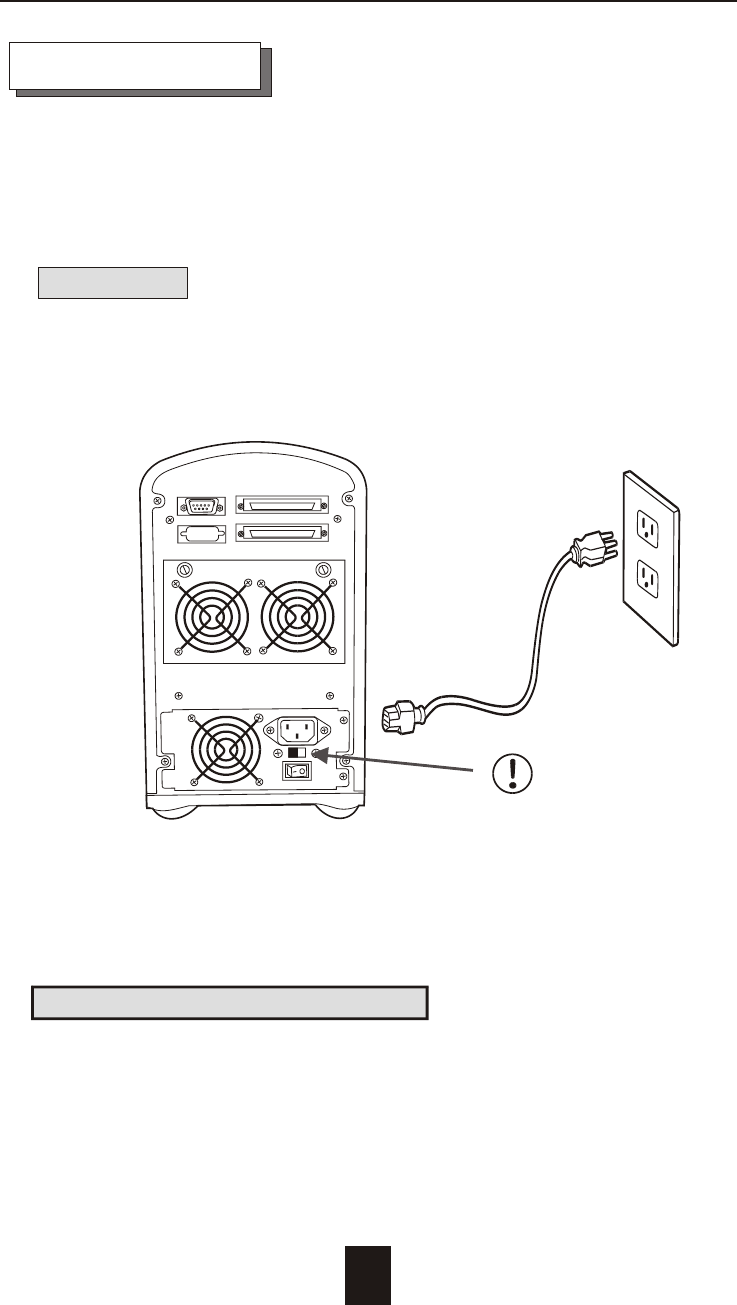
Power Source
Choosing a Working Voltage
The system can run either on AC 115V (+/10%) or AC 230V
(+/10%), Slide the AC voltage select switch on the power supply
to the correct position which corresponds with the wall outlet
supply voltage.
Warning !
Wrong AC Voltage input will harm the power supply and
cause serious damage to the Disk Array.
Figure : Power Source
This Disk Array is supplied with an AC power cord equipped with
a 3-wire grounding type plug. This is a safety feature and it is
important to only use a 3-wire grounded mains power cord.
! This Disk Array must be grounded
2-6
Getting Started
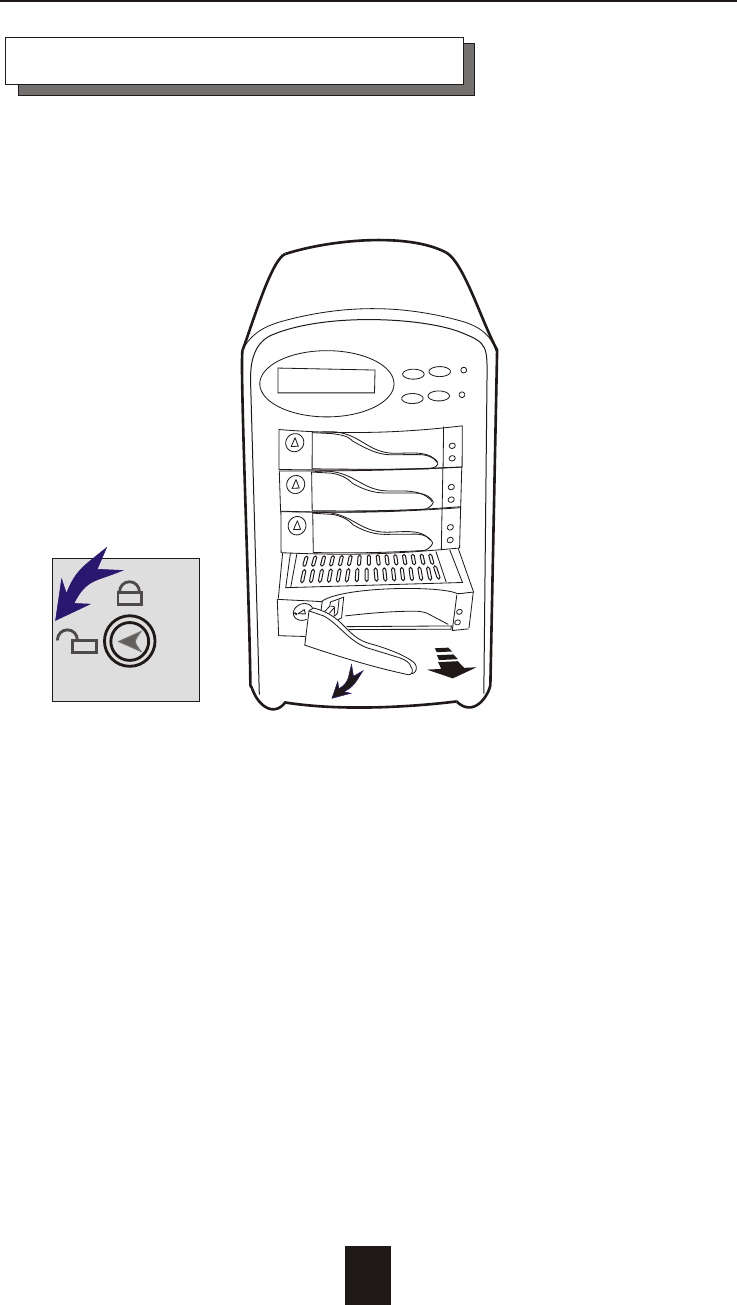
2-7
Getting Started
Figure : Installing HDD step 1, 2
Installing the Hard Disk Drives
Step 1 : Unlock the HDD tray by turning the Key-lock to the
correct position.
Step 2 : Gently Pull out the HDD tray.
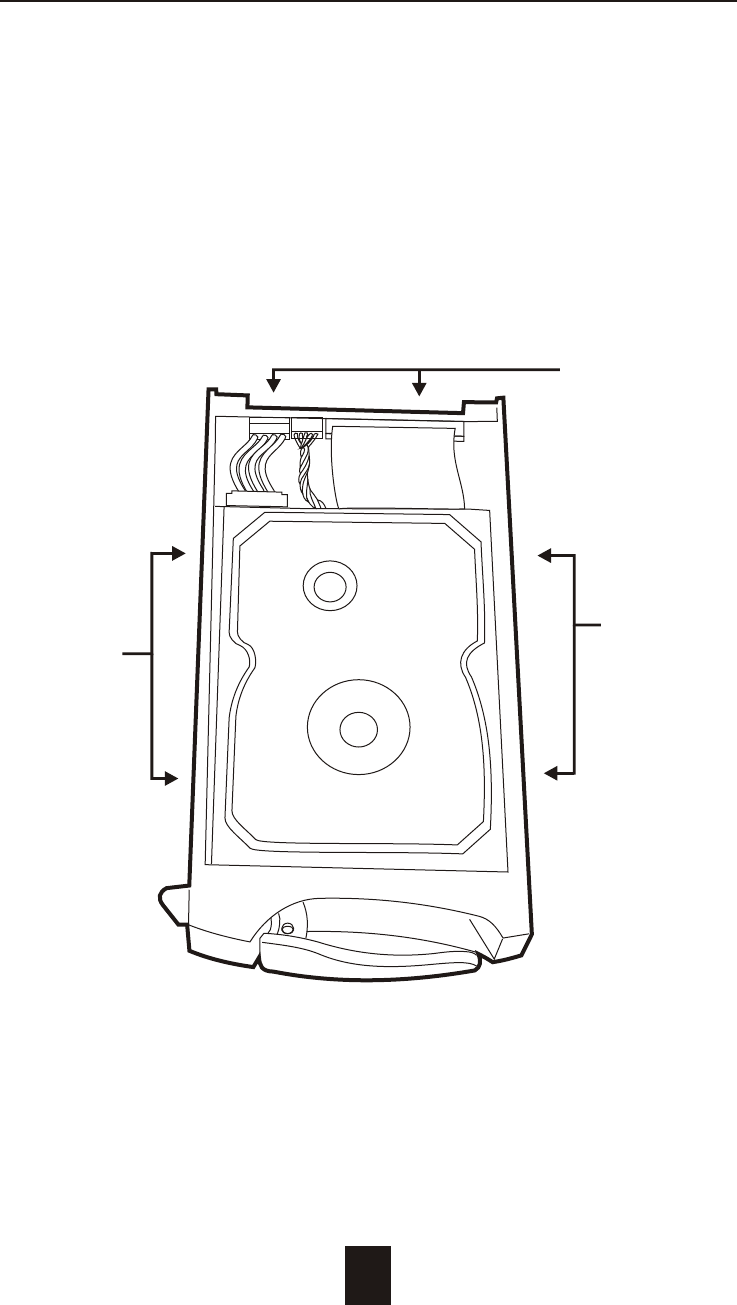
Getting Started
2-8
SCREWS
SCREWS
Cabling
Figure : Installing HDD step 3, 4, 5
Step 3 : Insert HDD into the tray
Step 4 : Screw in the hard drive.
( Use the correct size, type and thread )
Step 5 : Cabling, Connect the Data cable and Power cable.
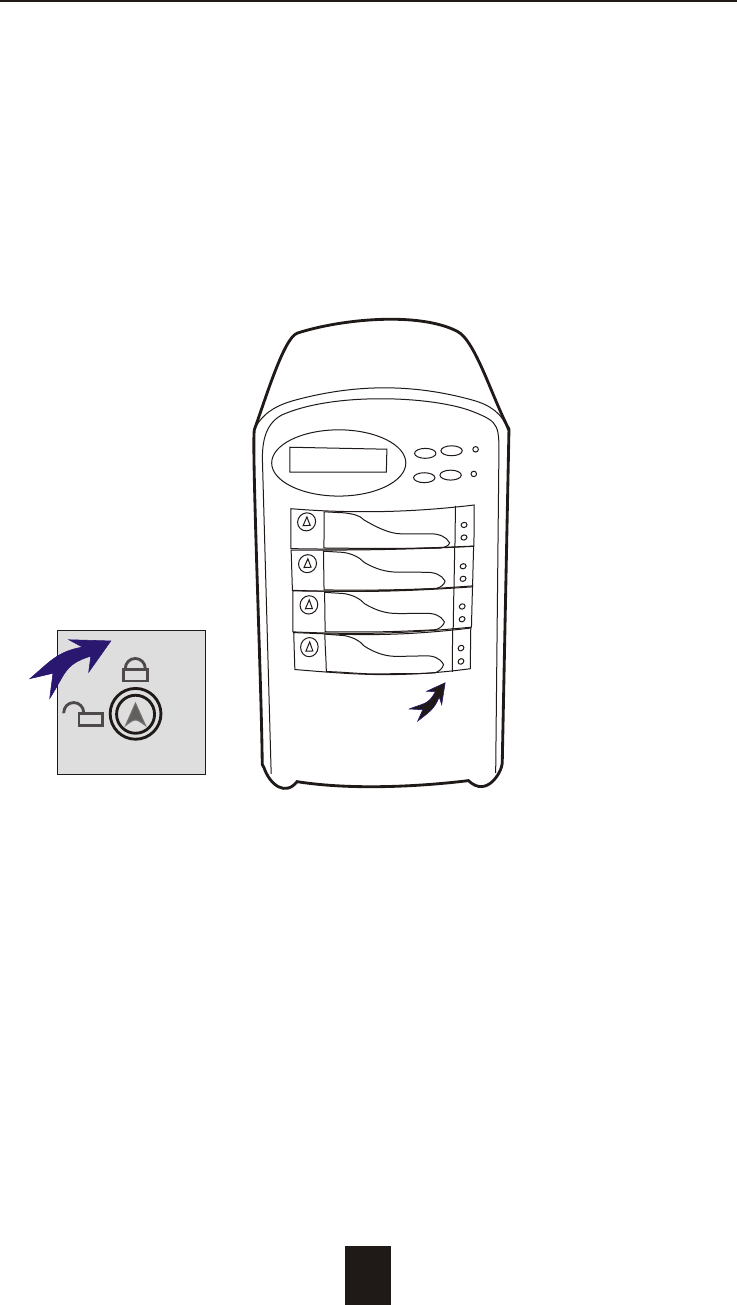
Getting Started
2-9
Figure : Installing HDD step 6, 7
Step 6 : Gently slide in the HDD tray.
Step 7 : Lock the HDD tray. When powered on, the Green LED
will light up.
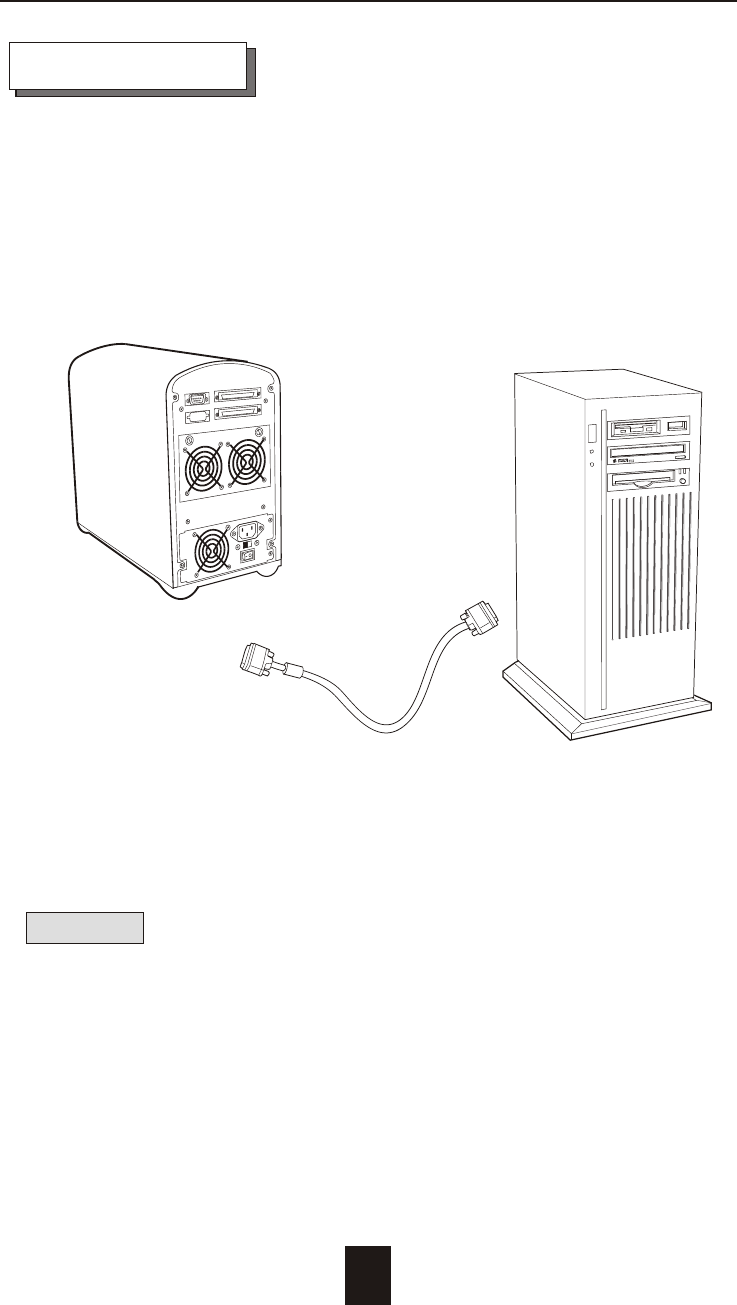
Host Linkage
With the HDD(s) installed correctly, you are ready to connect the
Disk Array to your Host computer.
Use a shielded twisted-pair SCSI cable to connect your Host
computer to the Disk Array's built-in 68 pin SCSI adapter port.
Connect the Host computer as shown below :
Figure : Host linkage
Caution !
For safety reasons, make sure the Disk Array and Host Computer
are turned off when you plug-in the SCSI cable.
2-10
Getting Started
Disk Array
Host Computer
SCSI
Plug
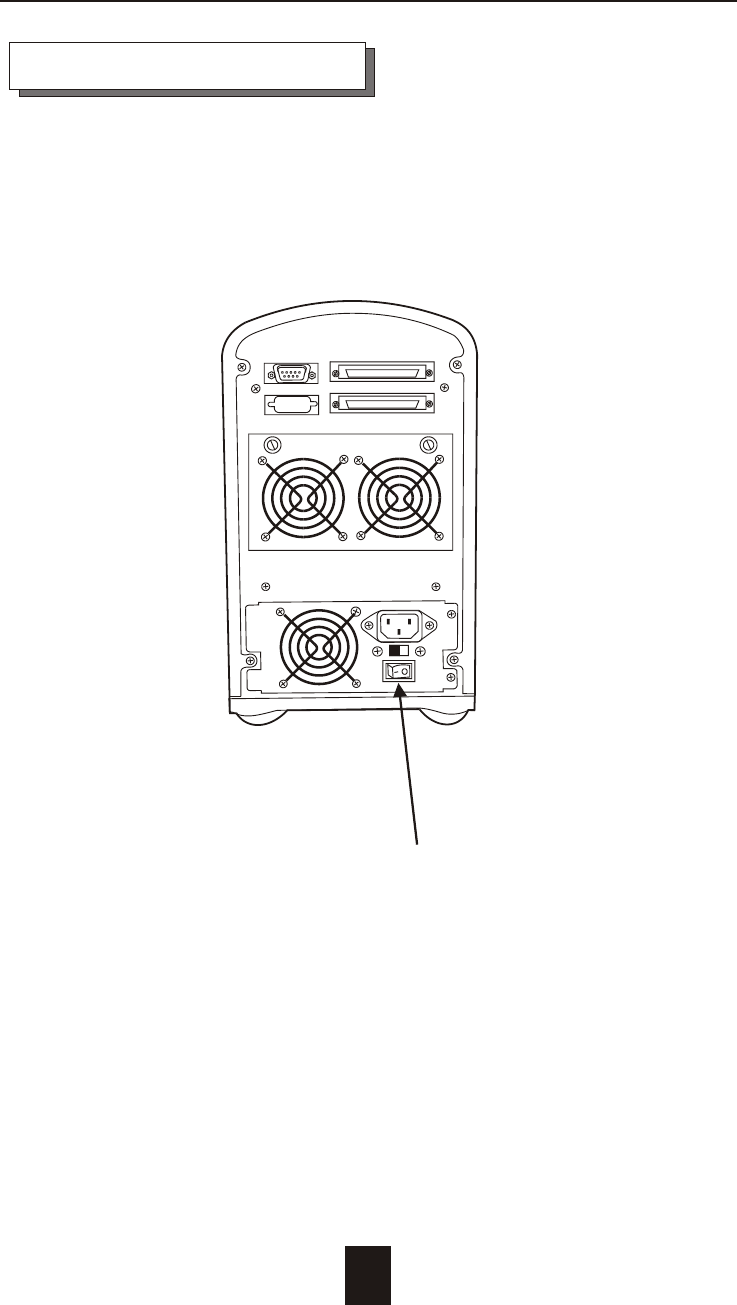
Power-On and Self-Test
When you connect the Disk Array to the Host computer, You
should press the ON/OFF Switch ( o / I ) on the power supply, it will
turn the Disk Array system on and the Self-Test will be started
automatically.
2-11
Getting Started
Power Supply's On / Off Switch
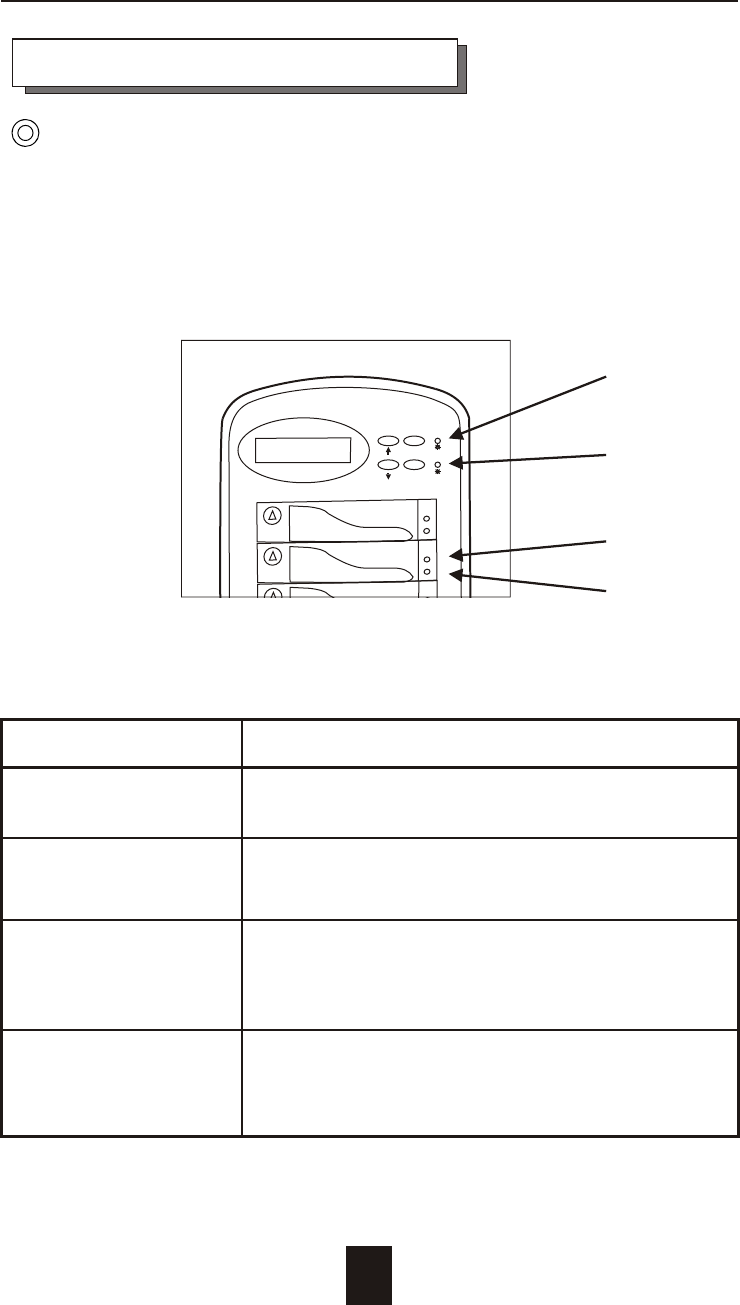
LED Descriptions
1. Power ON Indicator light up : "Green" , it lights when the Power Supply
is plugged and operating functionally.
2. Host Computer Access light up : "Yellow" , Indicates Host
Indicator computer is currently accessing the Disk Array
3. HDD Power-On Indicator light up : "Green" , It lights when the HDD frame
is locked and Power-On
HDD Error Indicator light up : "Red" , when the HDD not installed or error.
4. HDD Access Indicator light up : "Yellow" , when HDD is access.
2-12
1
2
3
4
Getting Started
LED Display & Function Keys
LED Display
Shown below is the LED Display. Please refer to the illustration,
the LEDs inform you of the Disk Array's current operating status.
Upon activating a certain function, the corresponding LED
indicator should turn on indicating that the feature is engaged.
Figure : LED Display
ESC
Enter
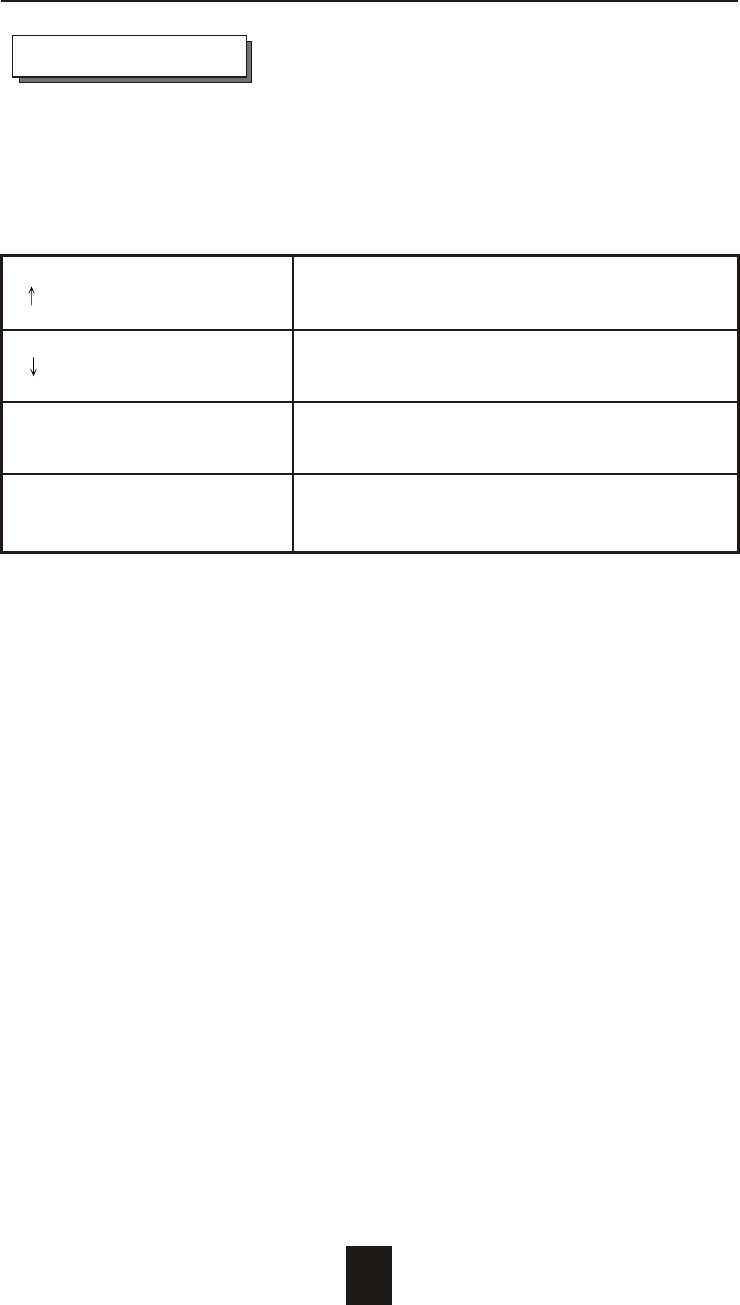
Function Keys
The four function keys at the top of the front panel perform the
following functions :
( ) Up Arrow / Right Arrow Use to scroll the cursor Upward / Rightward
( ) Down Arrow / Left Arrow Use to scroll the cursor Downward / Leftward
( Enter ) Use to confirm a selected item
( ESC ) Use to exit a selection
2-13
Getting Started
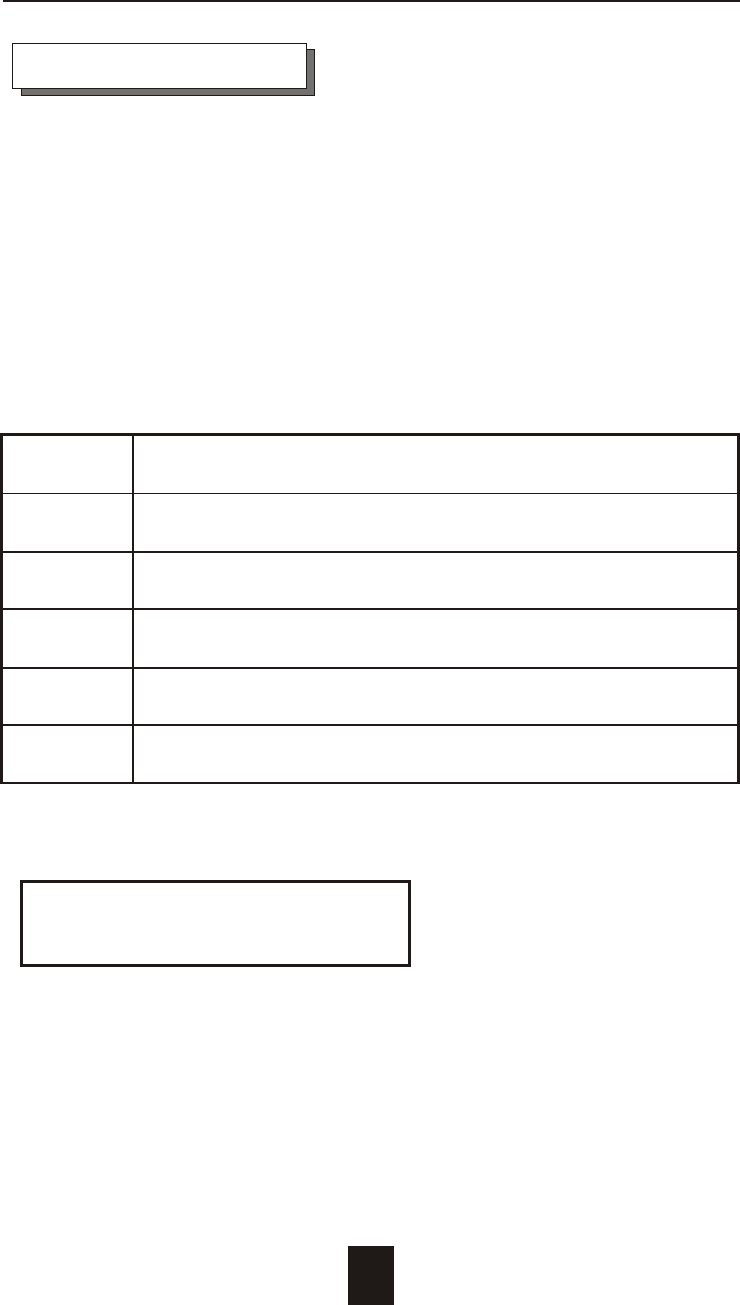
LCD Status Panel
Located the LCD panel, the LCD status panel informs you of the
Disk Array's current operating status at a glance. Upon activating
a certain function, a symbol or icon corresponding to that
function will appear in the display window. The symbol will remain
in the display window indicating the status of the Disk Array.
Identifying the status on the LCD
The following illustration shows the symbols (characters) been
used and their representation.
A description of each of the symbols in LCD display window :
O On-line and functional
R Error occur
I Identifying Disk Drive
S Spare Disk Drive
X Disk Drive not installed
W Warning : Disk Drive with too many Bad Sectors
Example of the LCD status display window :
OOSX R5 ID:0
This informs you :
a. HDD 1 ~ HDD 2 : On-line
b. HDD 3 : It is a Spare disk drive
c. HDD 4 : Not installed
d. RAID Level : In " RAID Level 5 "
e. SCSI ID : In " ID# 0 "
2-14
Getting Started